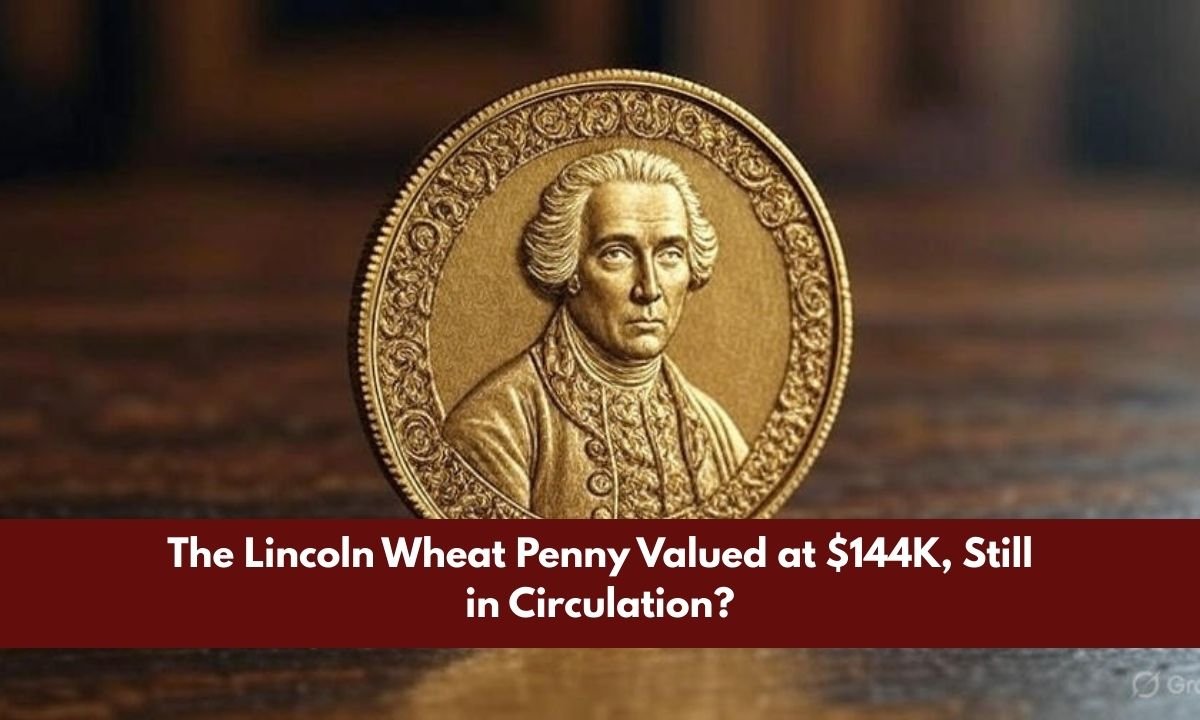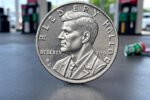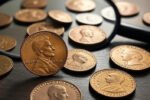Imagine paying for a coffee with loose change, and inside your palm lies a tiny treasure worth more than a luxury car. That’s the wild reality with some rare Lincoln Wheat Pennies — especially one that’s been valued at a jaw-dropping $144,000. But what makes this little copper coin so special? And could it really still be hiding in someone’s pocket or old piggy bank? Let’s dig in.
What Is a Lincoln Wheat Penny?
Let’s start with the basics. The Lincoln Wheat Penny is a one-cent coin that was first made in 1909. If you flip it over, you’ll see two wheat stalks surrounding the words “One Cent.” That’s why collectors often call it the “Wheat Penny.”
These pennies were made until 1958, and if you’ve ever looked through old jars of coins, chances are you’ve come across one. They look simple but have quite a fan following.
Why Are Some Wheat Pennies Worth So Much?
Most Wheat Pennies are only worth a little more than face value — maybe a few cents or dollars. But a few rare versions are worth thousands. The $144,000 one? That’s one of the rarest of the rare.
Why so expensive? It’s all about mistakes and minting. Some coins have tiny errors made during production — like being struck on the wrong metal, having missing details, or the wrong date. These “error coins” are like typos in a famous book: rare and valuable.
One of the most famous ones is the 1943 Bronze Wheat Penny. In 1943, pennies were supposed to be made from steel because copper was needed for World War II. But a few were accidentally struck in bronze. Only a handful exist today — and they’ve sold at auctions for as much as $144,000!
Is It Still in Circulation?
It might sound crazy, but yes — it’s possible that one of these rare pennies is still floating around in someone’s change jar or desk drawer.
Most people don’t look at their coins closely. And let’s be honest — when’s the last time you checked the year on a penny? That’s why every now and then, one of these ultra-valuable coins pops up out of nowhere.
So, next time you get change at the grocery store, take a peek. You could be holding a mini fortune.
How to Spot a Valuable Wheat Penny
Want to go treasure hunting? Here’s what to keep an eye out for:
- Look at the year. Anything from 1909 to 1958 is a Wheat Penny.
- Check for 1943. If it’s a copper-colored 1943 penny, it might be the rare bronze one.
- Check the condition. Coins that are clean, shiny, and well-kept are usually worth more.
- Use a magnet. Real 1943 steel pennies stick to magnets. If yours doesn’t, you might have a rare bronze one.
If you think you’ve got something special, don’t guess — get it checked by a coin dealer or send it to a coin grading service.
Why People Love Coin Collecting
Coin collecting isn’t just for experts or history nerds. It’s fun, it’s easy to start, and you never know what you might find. Every coin has a story — some even carry the weight of history. Plus, who wouldn’t want the chance to discover something worth more than your monthly rent?
It’s kind of like playing the lottery, but you’re only using your spare change.
Conclusion
The idea of finding a $144,000 Lincoln Wheat Penny in your wallet might seem like a dream — but it’s a real possibility. These rare coins are out there, lost in drawers, hidden in collections, or even hiding in plain sight. If you’re curious, take a few minutes to check your pennies. You might just get lucky. After all, treasure doesn’t always sparkle… sometimes, it’s just copper-colored and a little dusty.
FAQs
What year is the rare $144,000 Lincoln Wheat Penny?
It’s the 1943 Bronze Lincoln Wheat Penny, one of the rarest pennies ever made.
How can I tell if I have the rare 1943 bronze penny?
Check the year and the color — if it’s 1943 and looks like copper instead of steel, and doesn’t stick to a magnet, it might be the one.
Are all 1943 pennies valuable?
No, most are made of steel and only worth a few cents. Only the bronze ones are valuable.
Can I still find Wheat Pennies in circulation?
Yes, although rare, Wheat Pennies can still be found in change, especially in older coin jars.
Where should I take my coin to check its value?
You can visit a local coin shop, or send it to a professional grading service like PCGS or NGC.



